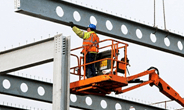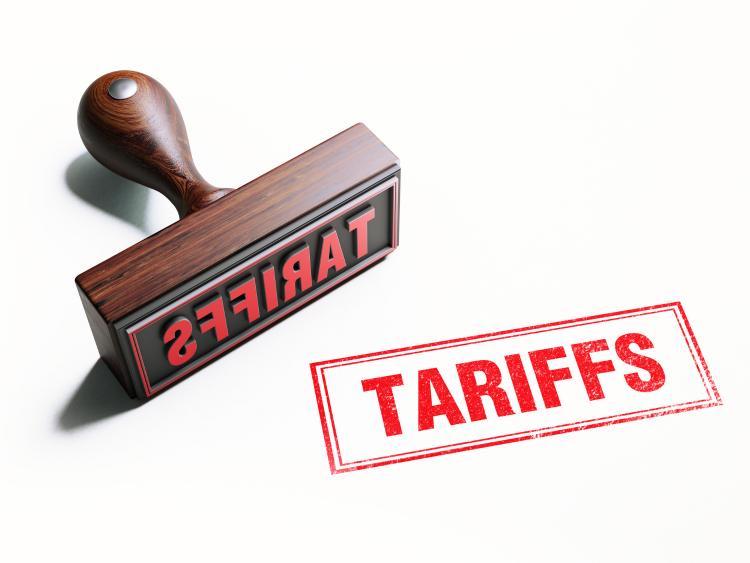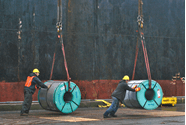Steel Markets

AGC: Construction Costs Decline in July, Bid Prices Rise
Written by David Schollaert
August 14, 2022
The prices contractors pay for construction materials and services – chiefly for new nonresidential construction – fell 1.3% month-on-month (MoM) in July, while contractors’ bid prices rose 5.4%, the Associated General Contractors of America (AGC) reported in its latest analysis of government data.
AGC noted that despite the MoM decline, materials prices remain high and the availability of certain key materials erratic.
“Contractors welcome any relief they can get in the cost of most construction materials,” AGC CEO Stephen Sandherr said. “But it is still too hard to acquire most materials, and prices remain quite elevated for many key products.”
Citing the Bureau of Labor Statistics, AGC said that the producer price index (PPI) for inputs to nonresidential construction – the prices charged by goods producers and service providers such as distributors and transportation firms – slipped 1.3% through July but were still 14.6% higher year-on-year (YoY).
Meanwhile, the index for new nonresidential building construction – a measure of what contractors calculate they would charge to erect five types of nonresidential buildings – climbed by 5.4% MoM and 23.9% YoY.
A diverse mix of inputs accounted for the increase in the cost index even as prices for several metals and wood products declined, Simonson said.
There were one-month increases last month in the index for paving mixtures and blocks (+2.7%), concrete products (+2.2%), plastic construction products (+1.0%), and gypsum building materials (+ 0.3%).
The price index for diesel fuel fell 16.3% in July but remained 71.3% above its July 2021 level. The index for asphalt and tar roofing and siding products fell 0.4% in July but increased 18.8% YoY. Steel mill products fell 3.7% in price last month but increased 6.4% YoY. The index for lumber and plywood decreased 0.5% last month and fell 7.7% over 12 months. Copper and brass mill shapes fell 9.7% for the month and 7.9% YoY.
AGC urged public officials to create measures to ease supply chain challenges and to help lower the cost of key construction materials. The association noted that the Biden administration removing the remaining tariffs on key materials would help lower prices. It added that supply chains for many materials remain challenged amid shipping delays and manufacturing backlogs.
“We are not out of the woods yet when it comes to high materials prices and supply chain problems,” Sandherr said. “Unless public officials can put in place measures to arrest materials price inflation and unjam supply chains, contractors will continue to be squeezed by high prices.”
By David Schollaert, David@SteelMarketUpdate.com

David Schollaert
Read more from David SchollaertLatest in Steel Markets

CMC looks beyond Arizona micro-mill woes to long-term viability of construction mart
Despite the economic and geopolitical upheaval of the last five years, CMC President and CEO Peter Matt points out that the construction market has been an essential element of the way forward.

US importers face stricter rules under revamped S232 tariffs
“CBP expects full compliance from the trade community for accurate reporting and payment of the additional duties. CBP will take enforcement action on non-compliance," the agency said in a March 7 bulletin.

Steel exports rebound in January
US steel exports recovered to a five-month high in January after having fallen to a two-year low in December. This growth follows four consecutive months of declining exports.

Construction spending drops marginally in January
Construction spending edged down slightly in January, slipping for the first time in four months. The US Census Bureau estimated spending at a seasonally adjusted annual rate of $2,196 billion in January, down 0.2% from December’s downward revised rate. The January figure is 3.3% higher than a year ago. January’s result, despite the slight erosion, […]

HVAC equipment shipments slow in December but strong annually
Shipments of heating and cooling equipment in the US fell to an 11-month low in December, according to the latest data released by the Air-Conditioning, Heating, and Refrigeration Institute (AHRI).
